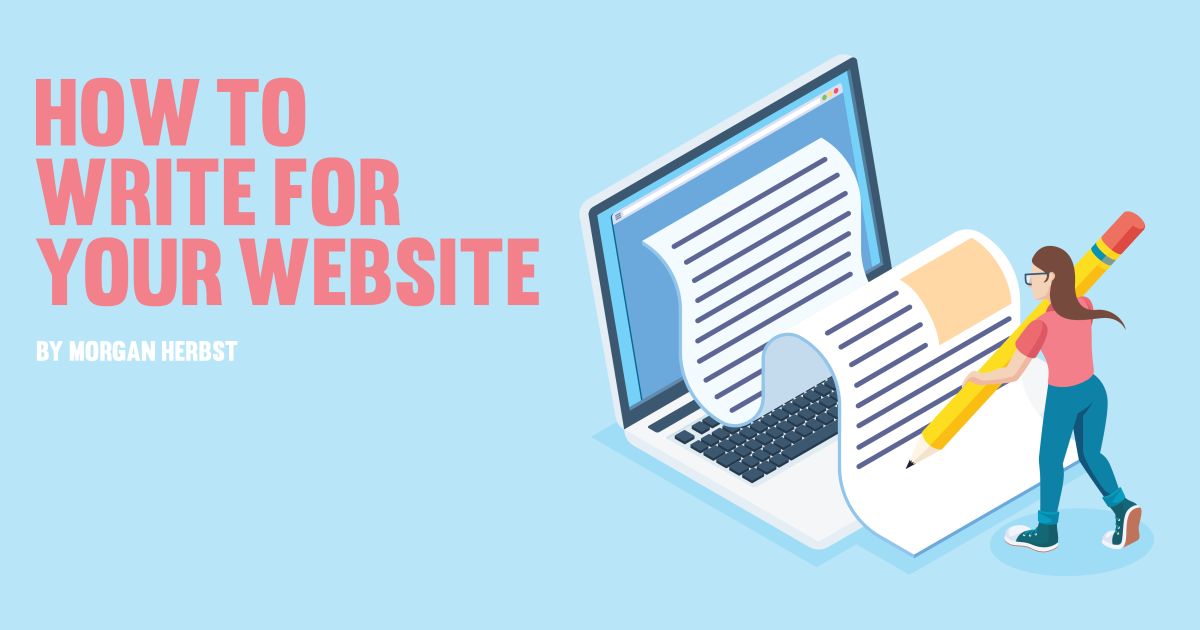Your shiny new website is almost ready to launch. The fonts, colors, and images are consistent with your brand; the navigation is intuitive; and hosting is all set up and ready to go. All that’s left to do is replace that “lorem ipsum” copy with actual content.
But you aren’t a professional writer.
Lucky for you, when writing for a website, you don’t have to be. Writing for the web is a study in key words and careful organization. This is because your reader is skimming. People typically visit websites to get information fast. Think about your own user experience: you likely have specific information you’re looking for in mind already, so you skim for keywords.
Before you start…
I recommend you take two steps that will make your writing SO MUCH easier.
1. Drop your anchor. Take a second and jot down:
- Your industry
- Your audience
- Your goal for your site visitor
Keep this information at the front of your mind while you write. It may seem silly, but it’s easy to go on tangents or run out of steam when writing. Use this note as your anchor, reminding you of your ultimate goal.
2. Draw your roadmap. Create your site architecture. This will be your writing map—guiding you across your drop-down menus and sidebars. Plan where your pages will go, and what topics and content will be featured. The more detailed you make your site structure, the easier the next steps will be. This is basically an outline but structured visually to remember your site navigation.

(You may already have a site architecture, depending on how far along your website is in being developed.)
Ok. You have your anchor, your roadmap, and probably a sense of annoyance at all my metaphors.
Now it’s time to write.
Here’s the secret to web writing—the inverted pyramid. Co-opted from the world of journalism, the inverted pyramid (or funnel method) means putting your most important information at the top of the page, then drill down to the more specific supporting information.

The beauty of the inverted pyramid is it answers your site visitors’ key questions first–so those who keep scrolling learn the specifics, and those who bounce still leave with the important information. The inverted pyramid model improves comprehension and structures your content logically.
Tips to keep in mind:
While you write your “skimmable” and compelling website...
- Keep it simple. This is the most important advice—and the most often ignored. It can be tempting to pepper your website with industry-specific terms and jargon to sounds smart, but this strategy can backfire. Jargon alienates your readers who may not be technical experts. Fancy vocabulary words and complex sentence structures slow readers down. Good writing, especially for the web, is straightforward. Aim to write for an 8th-grade reading level.
- Keep it short. Don’t confuse length for information. Four sentences per paragraph, max. No more than twelve words per sentence. This isn’t a rule set in stone—but use this formula to really think about each word you choose. Nobody likes being greeted with a wall of text on a site.
- Stick to active voice. A passive voice makes for weak sentences. Active voice makes personal, direct sentences. For example, instead of “Pizza can be ordered from our website,” say “You can order pizza from our website.”
- Chunk your content. Use headlines and subheads to organize your content on the page. Limit paragraphs to one topic only. Use bulleted lists to break up content. This will help your reader quickly pull necessary information, and it avoids your information being lost in the shuffle.
- Keywords, keywords. Consider the words your reader is skimming for, and use them often. Including these keywords will also help your site's SEO. I like this handy guide to discovering your keywords.
Ready to make a website? Still need help writing content? Put us on your team.

